Book notes: 'Dreams - The Art of Boris Vallejo'
Featuring robot vampires, fingernail claws, so many bodybuilders
Boris Vallejo gets a bad rap, constantly framed as the poor man’s Frank Frazetta. Which I get — he doesn’t have the same kinetic energy — but it’s not like anyone else is in Frazetta’s league either, and Vallejo does have a lot of range: He can do kid’s book art just as well as the hyper-realist fantasy art he’s known for. Plus, he uses a very detailed approach, nothing like Frazetta’s action-oriented just-the-essentials method.
Boy does he love a very specific body type, though. I don’t personally love bodybuilding, but I’m happy Vallejo had a hobby he could obsess over so thoroughly.
Anyway, here are some book notes on 1999’s Dreams - The Art of Boris Vallejo, which features mostly 90s art. No author is credited for the text, but it doesn’t seem to be by Vallejo.
***
Page 6: Vallejo was born and raised in Peru, but moved to New York for his career. Most of his art is drawn using actual models, alongside his wife, artist and nationally ranked bodybuilder Julie Bell. She also models for his work — “she appears thinly disguised in over a third of them.” Classic wife guy.
Page 7: “Gryphon and Egyptian Janice,” 1989 — that’s Janice Ragain, bodybuilder and the model here. This is clearly an 80s-era bodybuilder wrapped up in a few Egyptian/fantasy signifiers, and your opinion on Vallejo’s entire body of work probably comes down to whether you think that’s inherently a bad thing. He does not!

Page 8-9: “Alien Visitor,” 1990. Vallejo added the alien for fun, after the painting had already been used as a Tor cover with just the lone woman. It’s a lot more playful and weird with the alien! I also love the rock formation on the left — good example of how Vallejo’s work shines when it’s not the purely realistic forms that he loves and is known for.
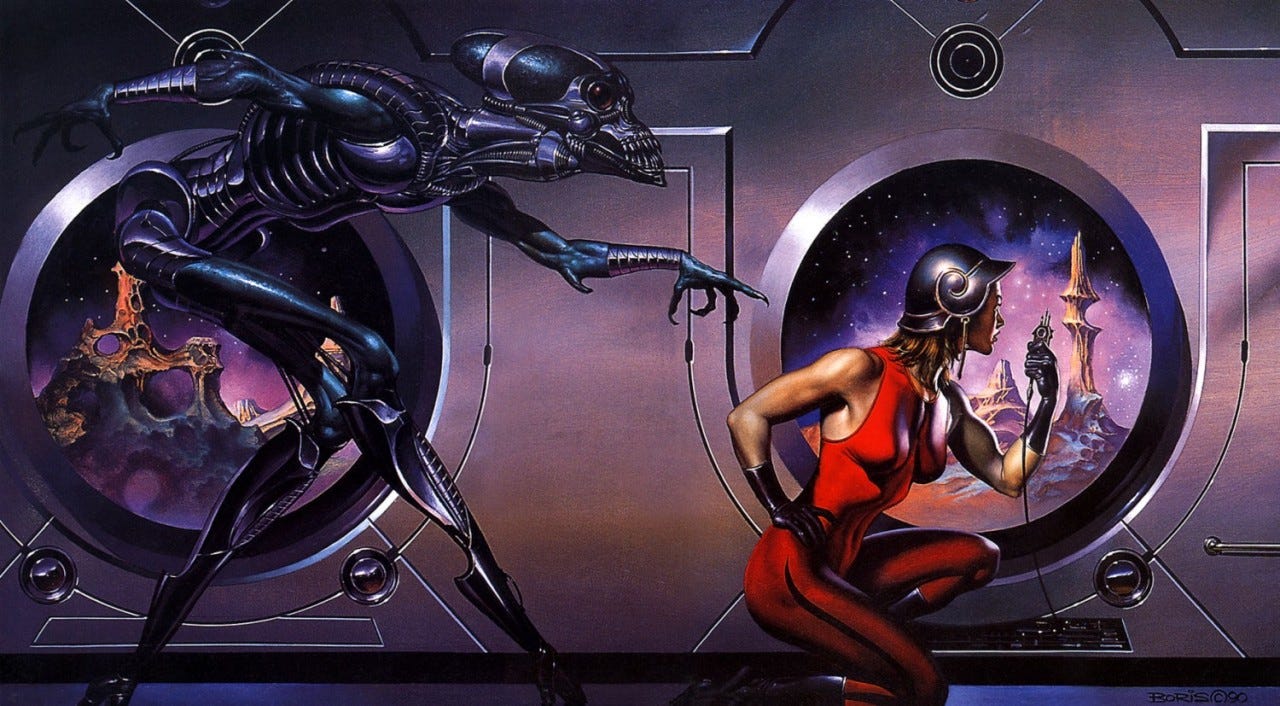
Page 11: Here’s another example of Vallejo getting much weirder with his art after it has already been used as a cover: He added a robot vampire to this to balance out all the empty space he’d initially left for the cover text. “Robo-Vampire,” 1990.
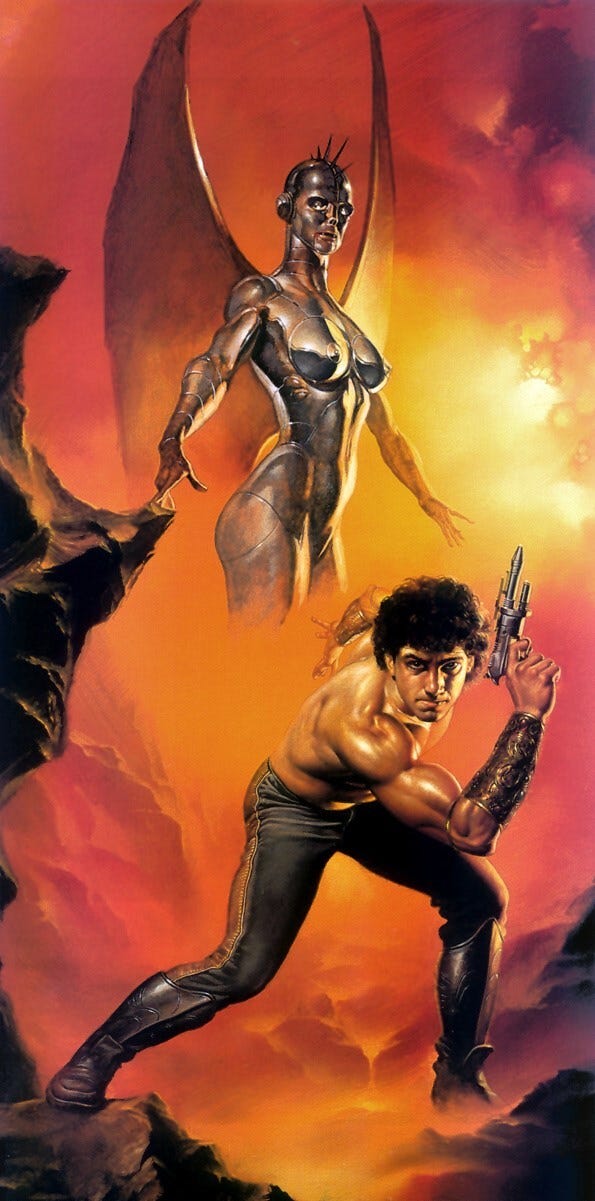
Page 32-33: “Dragon's Fight,” 1994. Interesting note on this page: Vallejo “never makes models to capture these angles, despite the cumbersome structure of dragons; or to help with the extremes of shading that are necessary. For these he relies on pure imagination.”
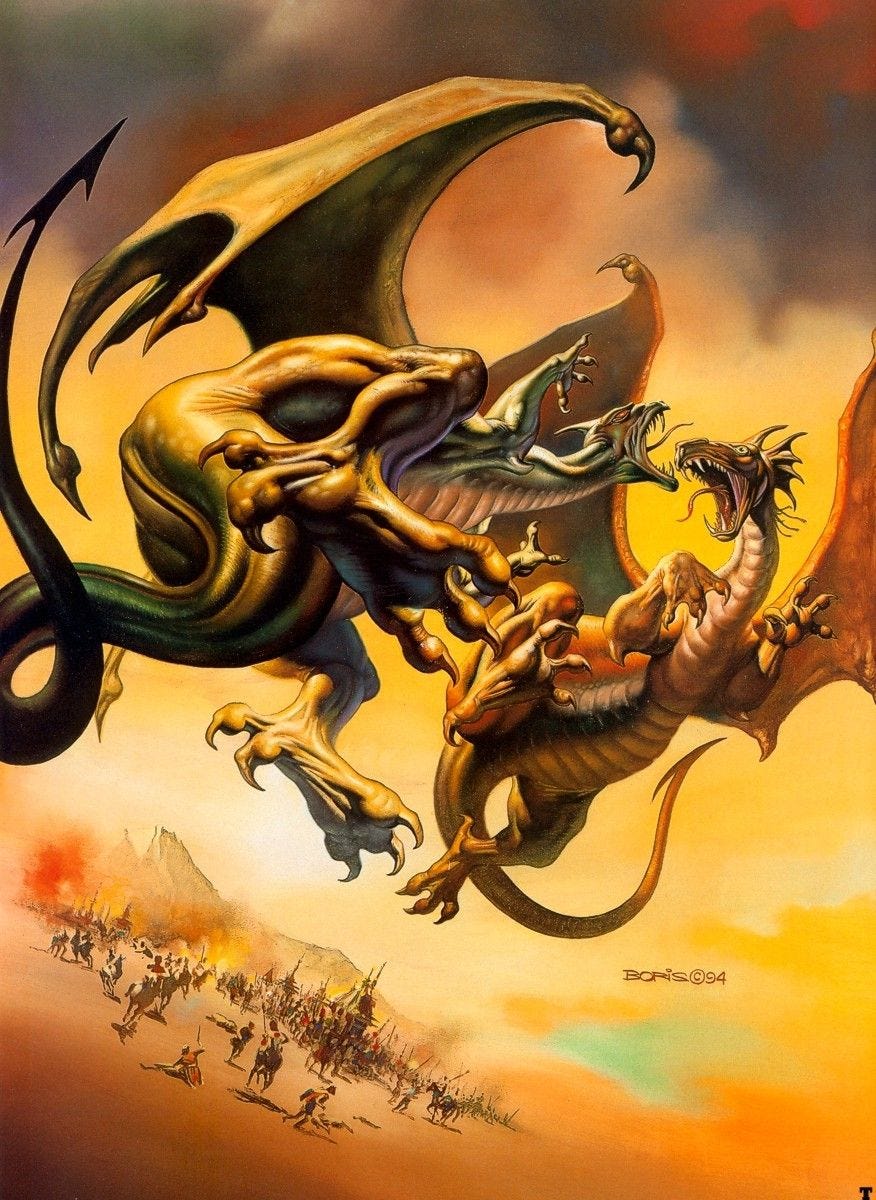
From images like that one, it’s clear that Vallejo can do dynamism, he just doesn’t want to. He’s far more interested in using models, which means relying on static poses that can be held for hours on end.
Here’s the counter-example, “Nesus and Dejanira,” 1988, from page 39. This could not be more obviously based off of two models posing. Fun fact, they’re not just any models: “The model, Diana Dennis and Kevin Lawrence, were possibly the most popular couple in the field of professional bodybuilding at the time.”
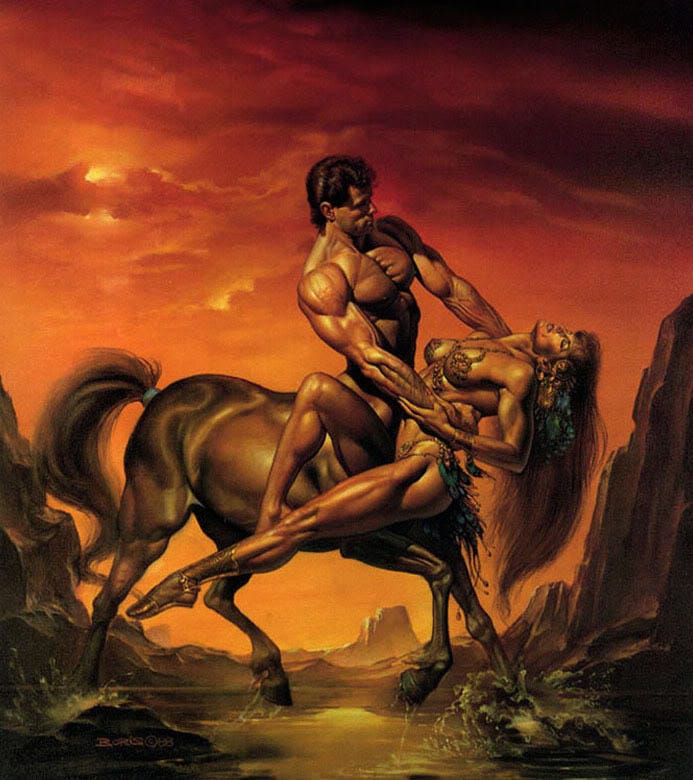
Page 43: A jokey video game cover, “Mother’s Love,” 1995:

Page 60: Vallejo estimates that ten percent of his commissions are for projects that never wind up happening.
Page 68: “What Boris loves most about his work is the chance it provides for painting the human form. Other aspects — jewellery, fantasy landscapes and creatures — are all enjoyable, but it is the human form toned to perfection that is his chief passion.”
Page 80: “The Hand,” undated. Vallejo “A simple but very successful idea for which Boris claims little credit, because he was presented with the concept and just asked to bring it to life.” (It’s not mentioned in the book, but this was used as box art for the video game Star Control)
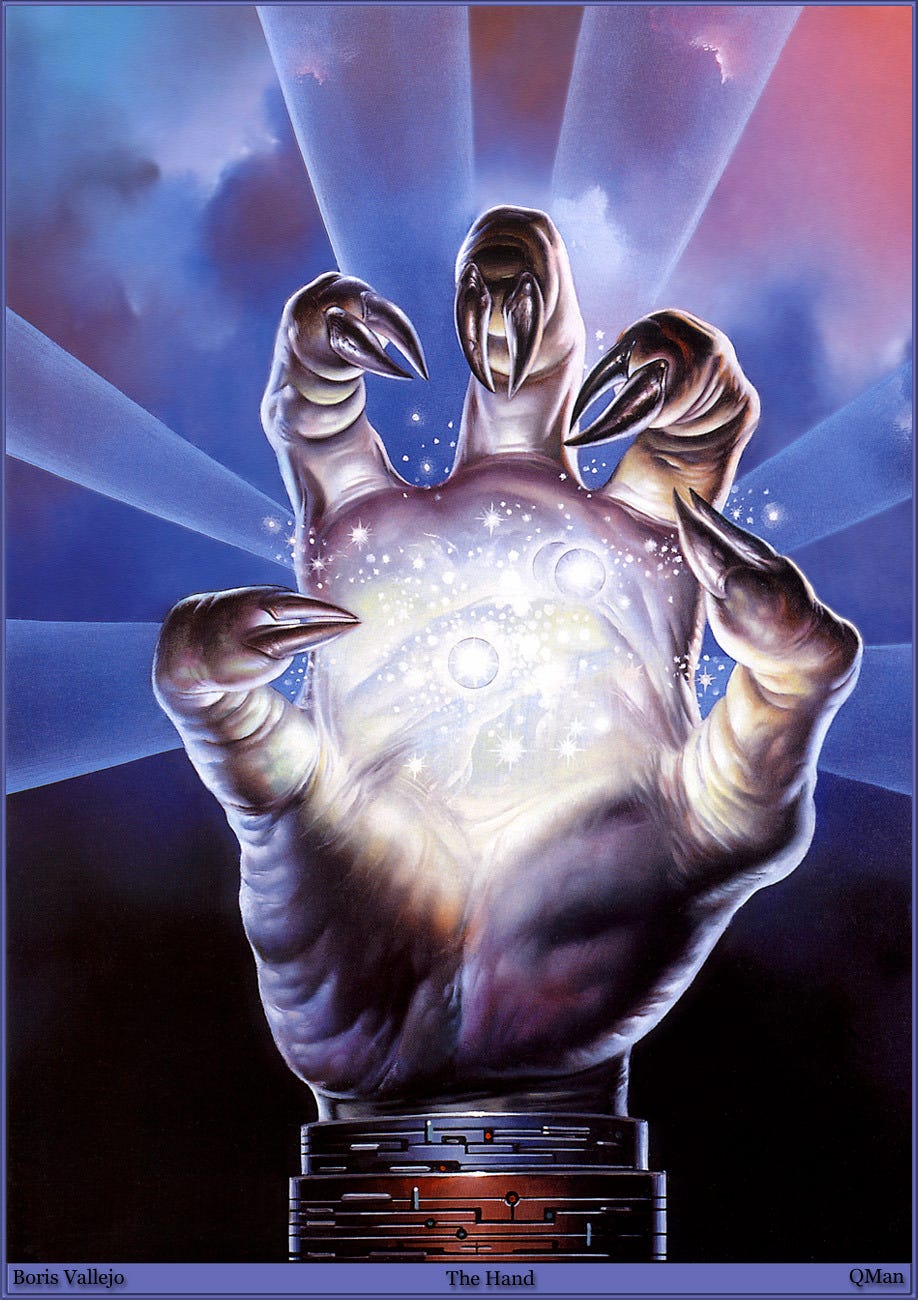
Page 84-85: Boris does enjoy spaceships, despite his love for bodies. Here’s a pure sci-fi work, “Across the Heavens,” 1993. He went through a phase of painting cars and motorcycles, which informs his spaceships.

Page 93: This book mentions three or four times that Boris often starts with the human form, and then adds whatever elements he feels like afterwards — giant bubbles, an eyeball with bat wings, or robot butterflies, say. Often he finds symbolism in the images after he’s painted them.
Page 94: "T Rex and Spaceship,” 1987
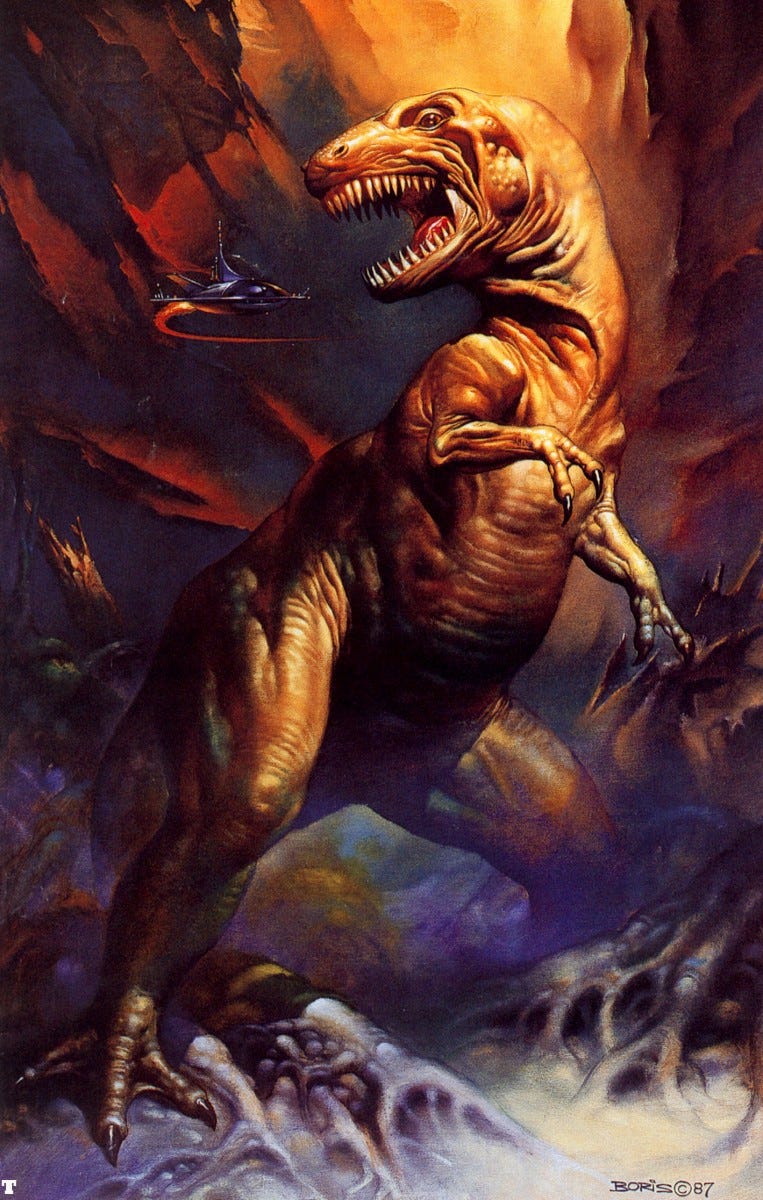
Page 102: Vallejo doesn’t like cover art trope of a purely decorative woman: “These days Boris is fortunately in the position of being able to turn down comissions that require helpless females.”
Page 105: Literally a page after we get that insight, however, this 1996 image, “Bill and Hill,” shows up. If I had to see this, so do you.
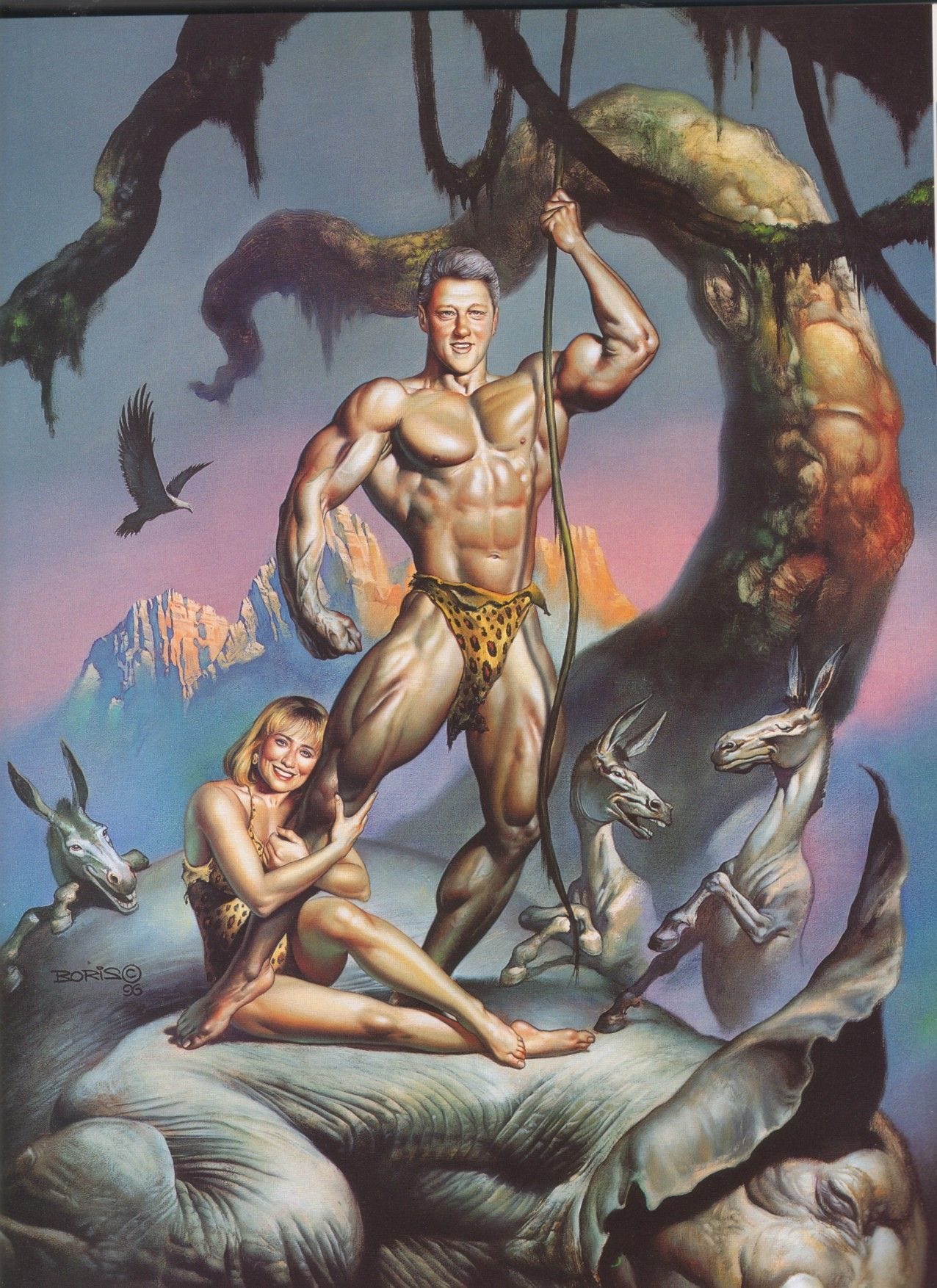
Yup! I don’t know where to start there, so let’s just end here.